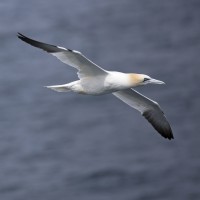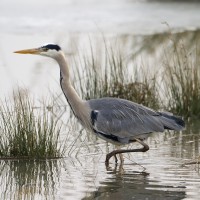Descripción
The river Eo estuary is an excellent place to observe aquatic birds (ducks, gulls, waders, herons) and seabirds in general, especially during wintering and migration times. It is in the case of cold and stormy weather in Northern Europe that less common species can be seen. The tides condition the feeding behavior of the birds and also the best hours for their observation.
_________________________
Espagnol: El río Eo discurre entre Asturias y Galicia y desemboca en el Cantábrico formando una Ría de unos 10km de longitud y una anchura aprooximada de 1km. Se trata de un excelente lugar para observar aves acuáticas (anátidas, gaviotas, limícolas, ardeidas..) y aves marinas en general, especialamente durante la invernada y las épocas de paso. En el caso de olas de frío en el Norte de Europa es cuando se pueden ver especies menos habiituales. Las mareas condicionan el comportamiento alimentario de las aves y también las mejores horas para su observación.
Detalles
Accesso
There are various observation points, some of the best being in Ensenada de La Linera, on the Asturian margin of the Ría, especially between Figueras and Catropol. There are also points enabled on the Galician margin, near Ribadeo. The Los Santos Bridge crosses the Ría joining the two areas and limits in some way the marine area par excellence (Cormorán Moñudo, Charrán Patinegro, Gaviota Reidora, Gaviota Patiamarilla) of the area most frequented by waterfowl (herons, waders, ducks, etc.).
_________________________
Espagnol: Hay diversos puntos de observación, siendo algunoos de los mejores en la Ensenada de La Linera, en el margen Asturiano de la Ría, especialmente entre Figueras y Catropol. También hay puntos habilitados en el margen gallego, cerca de Ribadeo. El Puente de Los Santos cruza la Ría uniendo las dos Comunidades Autónomas y limita de algún modo la zona marina por excelencia (Cormorán moñudo, Gaviota patiamalilla, Gaviota reidora, Charrán patinegro, etc.) de la zona más frecuentada por de aves acuáticas (Ardeidas, limícolas, anátidas, etc.).
Terreno y habitat
Humedal , Cañón/acantilado , Río , Mar , Cañizos , PlayaCondiciones
Paisaje abierto , Rocoso , Arenoso , Pantanoso , Nivel del agua alto probableCamino circular
Sí¿Se necesita telescopio?
Puede ser útilBuena época para el avistamiento de aves
Todo el añoMejor momento para visitar
Invierno , Migración de otoño , Migración de primaveraRuta
Camino pavimentado , Camino sin asfaltarCamino difícil de andar
FácilAccesible vía
A pie , Bicicleta , CocheEscondite de observación / plataforma
SíInformación extra
In addition to sea and aquatic birds, you can find raptors such as Águila Pescadora being common wintering, the Halcón Peregrino the Cernícalo vulgar, the Alcotán Europeo or the Busardo ratonero.
_________________________
Espagnol: Además de aves marinas y acuáticas, se pueden encontrar rapaces como el Águila Pescadora siendo esta invernante habitual, el Halcón Peregrino el Cernícalo vulgar, el Alcotán Europeo o el Busardo ratonero.

